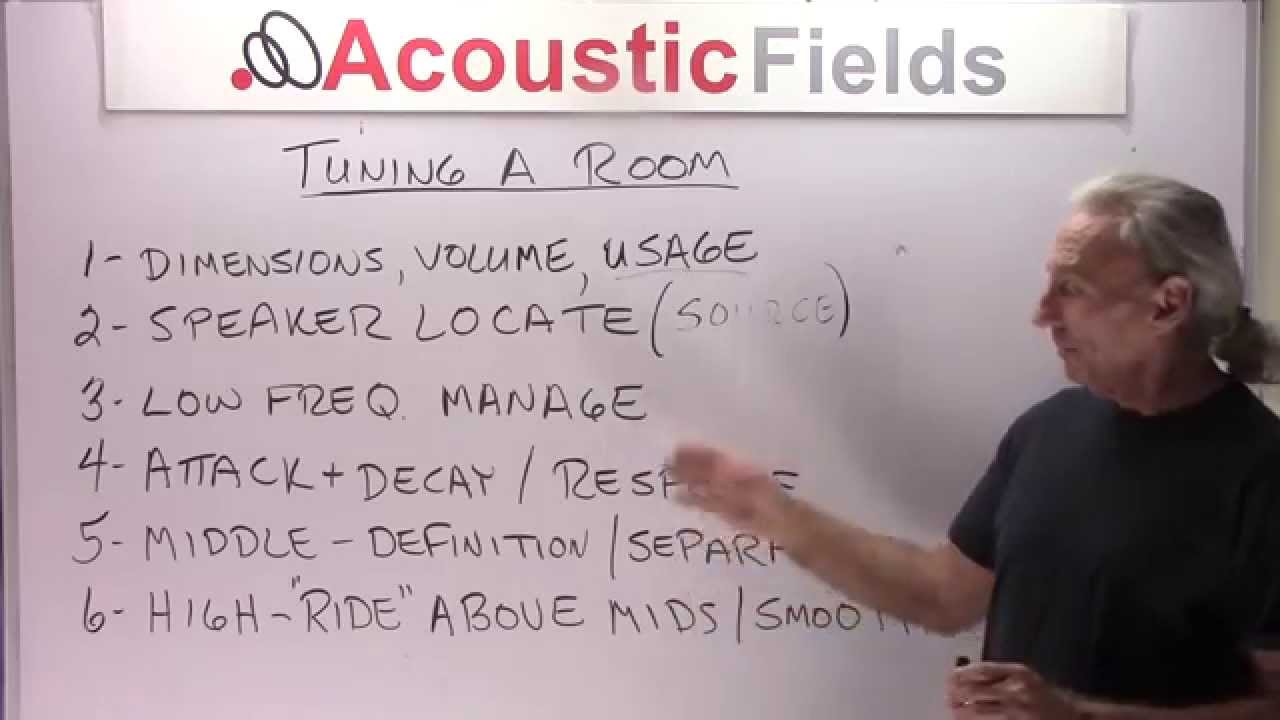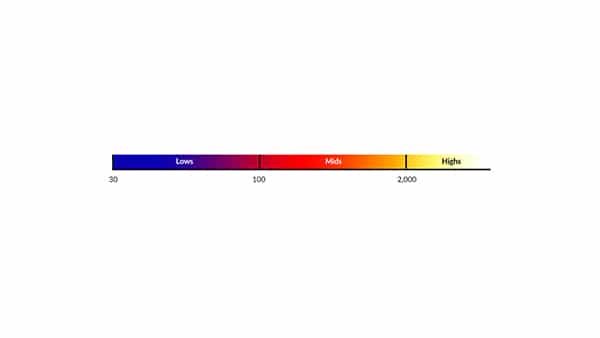The following is an unedited transcript from our video series from Acoustic Fields. There will be some errors in grammar and sentence structure that occur during this translation process.
For complete understanding and comprehension, please view the video which is included in this text. For any additional information regarding this topic or others relating to room acoustics, please contact us directly at:
P: 520 – 392 – 9486
dennis@acousticfields.com
______
I get a lot of questions from customers. They seem to be really confused and they start with the wrong end of the spectrum sort of speak and I think they get confused throughout the whole process. So hopefully this will help a little bit and we can get some definition and we can look at what we’re trying to do here. Step back, take a deep breath.
The first thing of course when we’re tuning a room is dimensions, volume and usage. We want to have the right size room for whatever we’re doing. Drum room, vocal rooms, listening rooms, home-theater rooms, control rooms, live rooms, they’re all different. So usage is really critical. Usage determines how much volume we need, length, width, height and the appropriate dimensions to minimize modal pressure issues. So we need to consider those three variables whenever we’re looking at tuning a room.
Speaker location. Very very critical what is the speaker? It’s the energy producing source within the room or if it’s a singer in a vocal room or if it’s drums in a live room. Whatever the sound source is, that’s what you have to look at. That’s the generating energy device within the room, so that’s what you have to make sure is located correctly within the volume of the room and within the dimensions of the room and obviously within the usage of the room. So the sound generating source in our example, here we’ve used the speaker but if it’s an instrument there is this particular spot in the room that produces the smoothest curve. Is the smoothest curve what we want, once again, depends on usage. If you’re recording versing playback, all these variables have to be considered. So finding the correct location of the sound source is critical.
Always start with the low-frequency first. If you don’t get the lows right in the room, nothing in the mids and highs makes any sense. Because you’re naturally struggling to listen through the unwanted pressure areas is in the room. And remember, a 30-40-50-60 cycle pressure area, modal area has the harmonics, the 120s, the 180s. All of these have to be taken into consideration.
So you must mange the low-frequency energy in the room correctly. And I think we all know that [inaudible 02:41] and building insulation is like that are not real good low-frequency management tools regardless of what manufacturers say. [inaudible 02:51] is not a bass trap, okay? So low-frequency management. Use the correct technology to manage the low energy within your room depending on volume, dimension and usage. A vocal room is going to have less energy than a drum room. So you can apply different technologies to manage the low-frequency energy.
Attack and decay, that’s the big thing with low-end. Make sure every note is just like the middle-frequencies and the high-frequencies. You hear the beginning, you hear the life of the note and you hear the end. All three areas within that have to be taken into consideration. Attack and decay rates are critical. That will get you the right low-end response that you’re after.
Middle-frequencies you want definition, separation, you want good layering of the mids in you presentation. They kind of ride upon the low-frequencies. So if you keep each group or each frequency group as a band, then you can understand that the lows are first, then the middles and the highs and they all kind of ride together. And then around the edges they all smooth out. So you want to make sure you have definition and separation in your middle-frequencies.
The highs, they’re like the mids on the lows. They ride upon the mids, so you have to have that layering of the highs, too. Diffusion is a really good technique to deal with high-frequency energy. We have the tools that are at our disposal.
So tuning a room, dimensions, volume and usage satisfy those three variables. Locate the sound source in the correct area to get the smoothest response and then apply your low-frequency, middle-frequency and high-frequency management techniques to get a good balance between the three.
In graphic 1 you see that we divide the frequency response range into three areas. So that’s what you have to do. The low end is anything below a 100. The middle-frequency range is from 100 to 2000 and 2000 up for the highs. So take each frequency range, low, mids and highs and divide it into that group.
Second graphic here is a little bit fun tongue in cheek but the container of that ice-cream sundae cup is the low-frequency. The ice-cream is the middle-frequency and of course the nuts or the whipped cream on top are the high-frequencies. Layers. One supporting the other. So you have to keep all of these things in mind when you’re tuning a room.
Thank you,
Dennis Foley










dear sir (room size help ) usage : recording Vocal .violin maybe cello and spanish guitar
we have a two room that should select one .
first one ( L 4.70 meter W 3.03 and L 2.95 )
second one ( has L. 9.00 w 3.23 and H. 2.95 )
all the walls created from brick and concrete except one side which is glass and i want to cover it soon .
the smaller room has one dresser with 0.90 deep which i think to put my 7 inch tree way eve SC307 speakers on it and cut the door of dresser or use it as book shelf and put my monitors in front of opposite wall (glass wall) and try to cover it with mineral wool and velvet curtain… please help me to choosing right room
truly yours
Reza joshaghani
Hi Reza, I would be happy to look at your room size/volume/usage. However, I need it a certain form since I get so many to process. Fill out the information in this link: https://www.acousticfields.com/free-room-analysis/